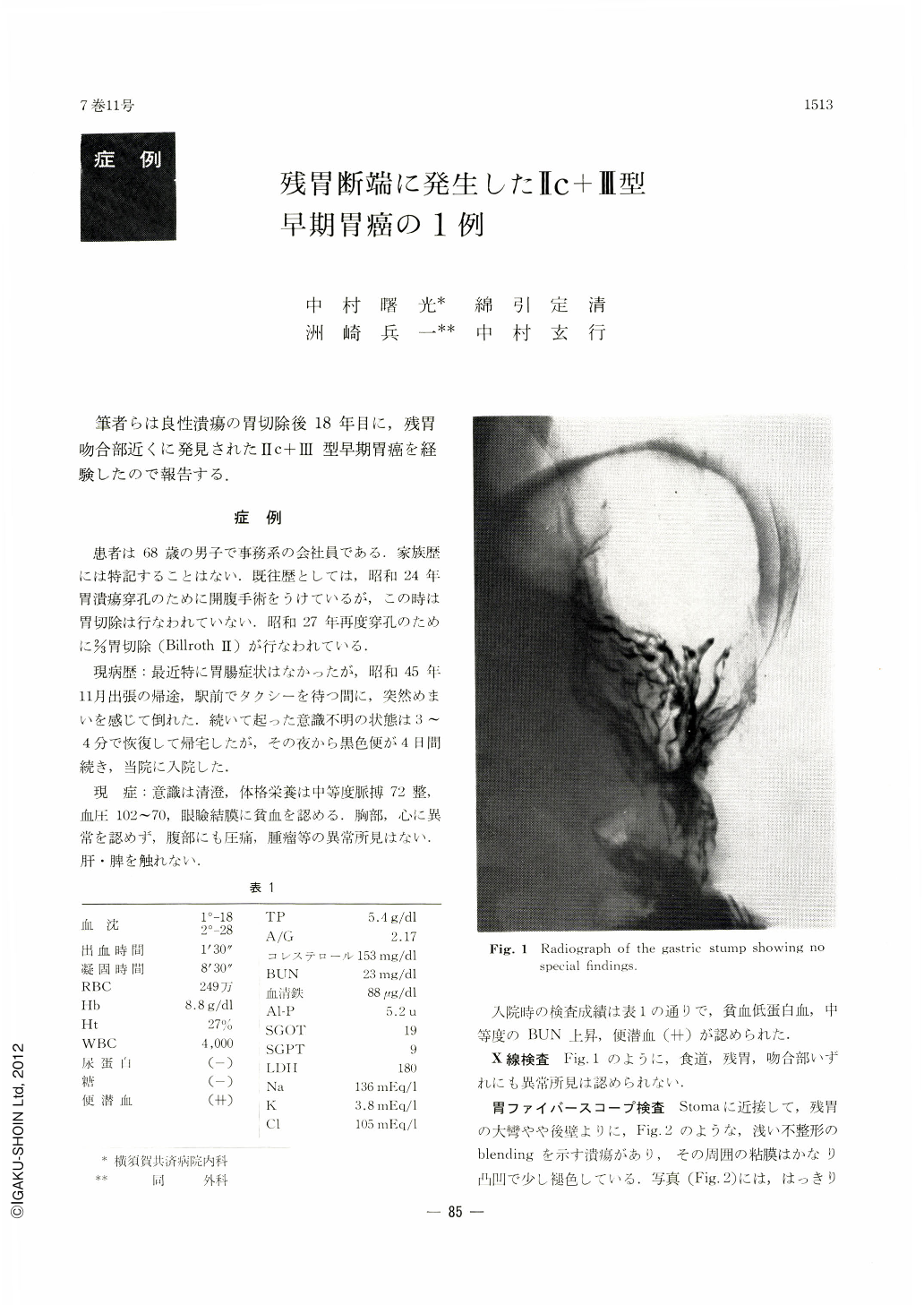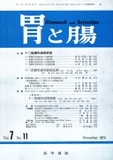Japanese
English
- 有料閲覧
- Abstract 文献概要
- 1ページ目 Look Inside
筆者らは良性潰瘍の胃切除後18年目に,残胃吻合部近くに発見されたⅡc+Ⅲ型早期胃癌を経験したので報告する.
症例
患者は68歳の男子で事務系の会社員である.家族歴には特記することはない.既往歴としては,昭和24年胃潰瘍穿孔のために開腹手術をうけているが,この時は胃切除は行なわれていない.昭和27年再度穿孔のために2/3胃切除(Billroth Ⅱ)が行なわれている.
This is a report of Ⅱc+Ⅲ type early cancer of the stomach encountered in a 68-year-old man who admitted to the hospital with complaints of dizziness, bouts of unconsciousness and tarry stool. He had undergone a two thirds gastrectomy with gastrojejunostomy 18 years before because of perforated benign ulcer of the stomach. Physical examination was unremarkable excepting pallor of the mucous membrane.
Laboratory examinations revealed that red-cell count was 2,490,000, white-cell count 4,000; hemoglobin was 8.8 gr. per 100 ml, hematocrit 27 per cent. Total serum protein was 5.4 with A/G ratio of 2.17. Blood urea nitrogen was 23 mg per 100 ml. The stool was positive for occult blood and the urine negative for protein.
Although the roentgenogram of the esophagus and gastric remnant was contributory, a shallow ulcer of irregular shape covered with white coat was demonstrated by gastrofiberscopy near the stoma on the posterior wall. Marginal blending and convergency of the folds showing sudden cessation around the ulcer were recognized as well. Malignant ulcer was suspected then. Biopsy revealed cancer cells localized in the mucosal layer. The gastric stump was excised. Gross diagnosis of the resected specimen was Ⅱc+Ⅲ type early cancer, while histologically adenocarcinoma mucocellulare was revealed, mostly localized within the mucosa, with only a minor involement of the submucosa. No histotogical findings were obtained suggesting that this cancer was an ucer-cancer occurring through malignant degeneration of a chronic benign ulcer.
For valid diagnosis of cancer developing in the gastric stump, it is most important that the patient should show no pathological signs more than ten years after the initial operation, because there is always a possibility that a cancer mass was not completely removed at the previous surgical correction or that one of multiple lesions was overlooked. Reports of cancer in the gastric remnant detected more than ten years after the first operation are so small in number; in 1968 Tanaka collected 23 such cases out of the literature.
Pathological findings of our case at the intial operation were not available to us, but we are convinced that this cancer occurred de novo in the remaining stomach because 18 long years had passed since the first operation before it came out. Incidentally, while most of the 23 patients were dead within one or two years after the re-operation, life of this patient shall be much prolonged because it was an early cancer. In the years to come the number of such a case would surely be increased along with the development of gastric endoscopy.

Copyright © 1972, Igaku-Shoin Ltd. All rights reserved.


